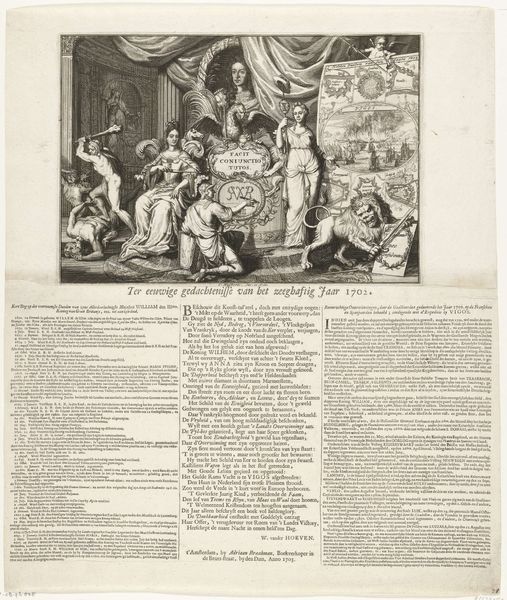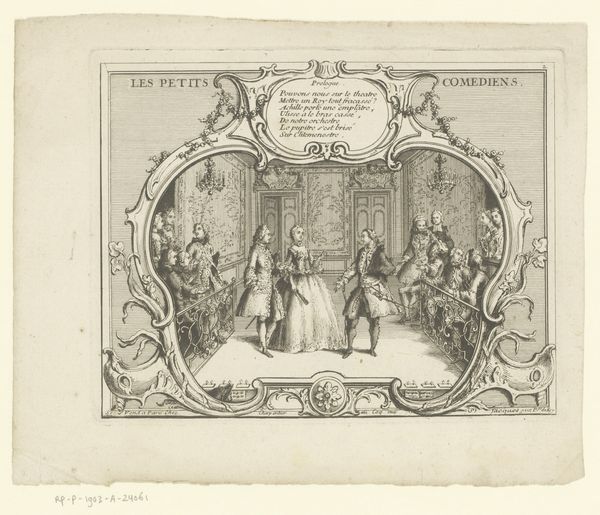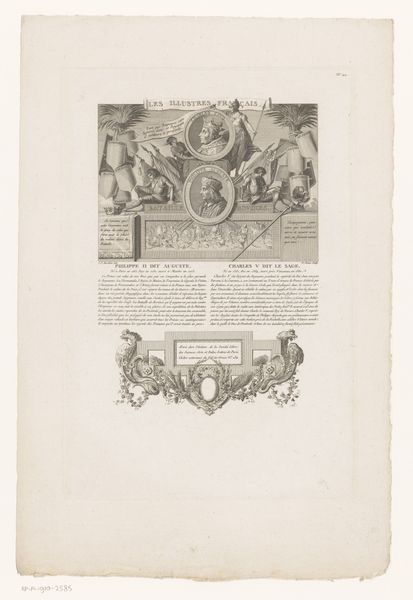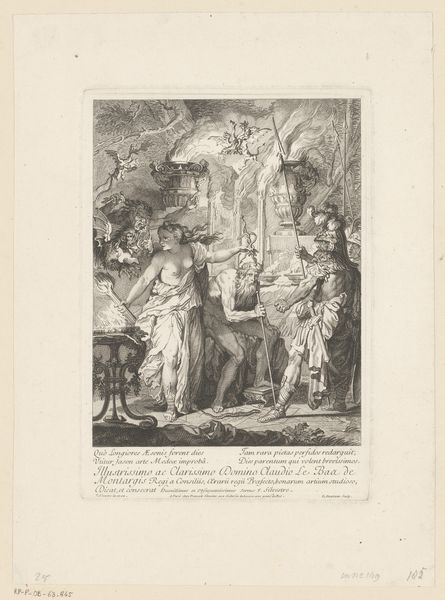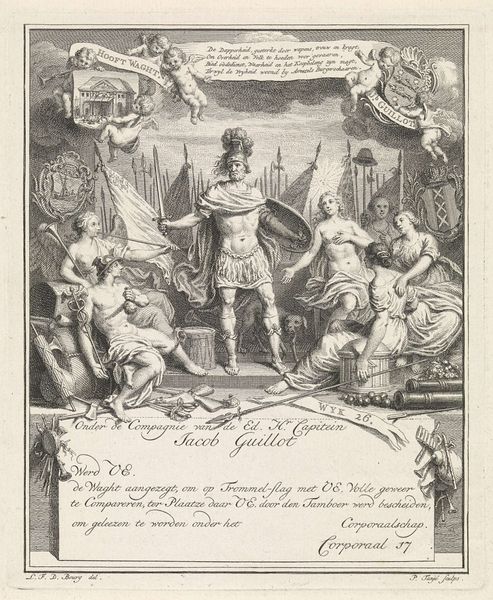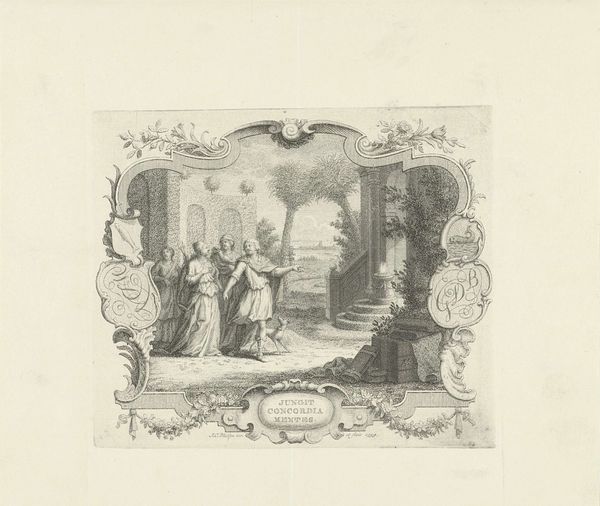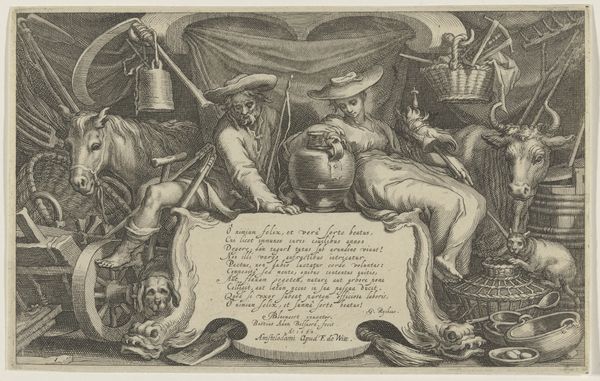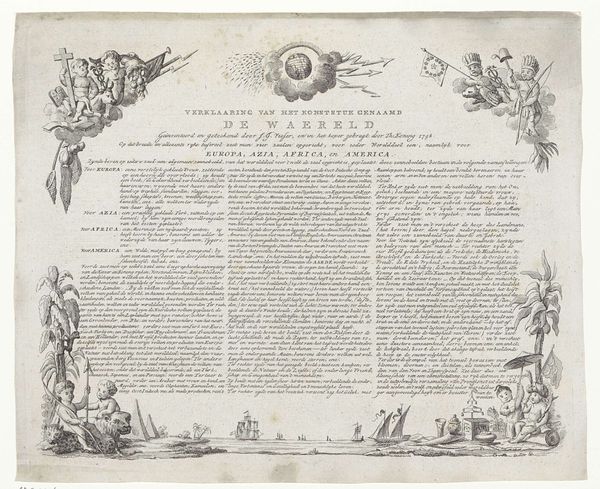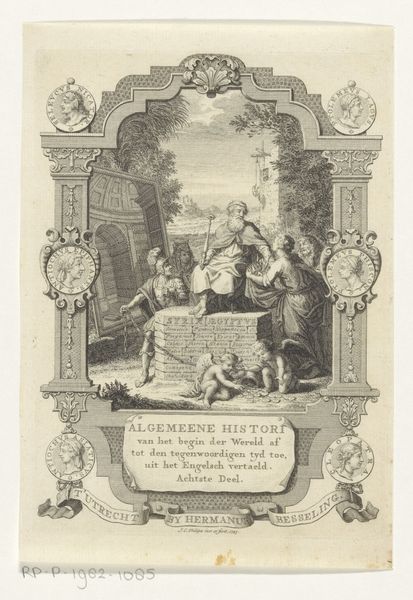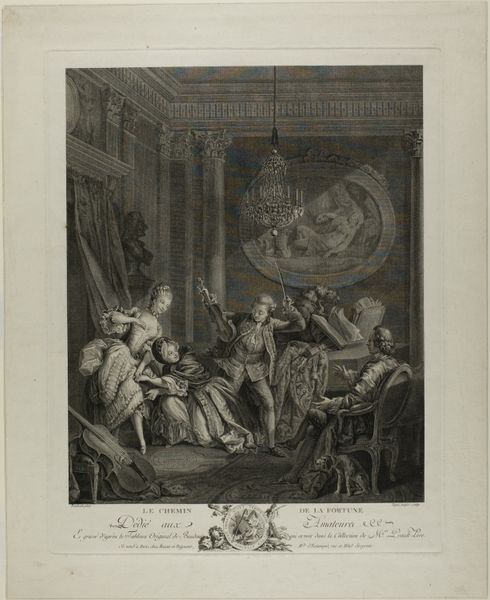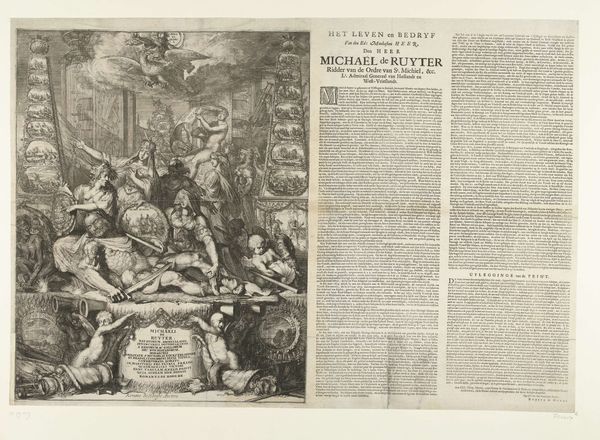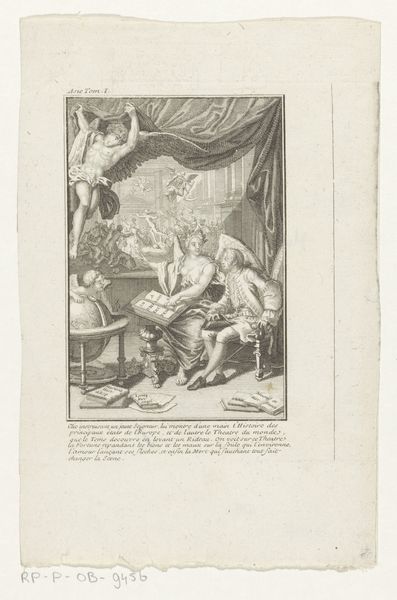
Allegorische voorstelling van de overeenkomst tussen religie en filosofie, of het geloof en de rede 1708
0:00
0:00
print, intaglio, engraving
#
allegory
#
baroque
# print
#
intaglio
#
old engraving style
#
figuration
#
11_renaissance
#
script
#
line
#
history-painting
#
academic-art
#
engraving
#
historical font
Dimensions: height 272 mm, width 202 mm, height 102 mm, width 153 mm
Copyright: Rijks Museum: Open Domain
Curator: Right, let’s have a look at this intaglio print from 1708, titled "Allegorical Representation of the Agreement between Religion and Philosophy, or Faith and Reason." It's attributed to Bernard Picart and is part of the Rijksmuseum collection. Quite a mouthful, isn’t it? Editor: It's striking. A world built on precision, those sharp lines meticulously mapping out these classical figures. Very formal, very staged, as though an entire drama is unfolding on a carefully curated set. Almost theatrical. Curator: Exactly! That Baroque drama. Picart was brilliant at capturing the spirit of the age. The composition itself is an allegory; the central figures of Religion and Philosophy extending hands symbolize, as the title suggests, an agreement. See how he uses light and shadow? Editor: It does give a sense of... integration. Look at how he deploys gestures. Pointing, guiding, blessing. Are they supposed to lead us through a complex argument? Religion presents as an older woman, doesn't she? And Philosophy looks younger? I read a story of progress somehow... Curator: It is thought-provoking, the age difference is also suggestive, right? It seems to mirror, perhaps, an academic point being argued: does Philosophy builds upon foundations that Religion already put into place? And, there are historical precedents to interpreting religion this way. Remember the Middle Ages' emphasis on reconciling Aristotelian logic with Christian faith. I love the symbols sprinkled throughout, from books of knowledge to heavenly representations. Editor: Symbols on symbols. A field day for semioticians, clearly. But thinking about cultural memory and the way images shape our perception... I wonder how people during the Enlightenment received this. The script right under the images. Was it common to address a general audience in this visual-verbal way? Curator: It was. Printmaking had that potential, after all, to spread and democratize ideas at an incredible speed! Think of how images became intertwined with text, forming a visual-literary language all its own, and becoming tools for social commentary. This particular artwork aimed, likely, to legitimize both faith and reason within a period rife with intellectual and religious tension. Editor: Hmmm... Makes me think about those periods in our present, where different views clash. An artifact doesn’t always stay in its original temporal place, after all. It’s here, in our time too. Curator: Precisely. And that is the wonder, isn't it? Art continues to converse. To teach. Even challenge, depending on who's watching.
Comments
No comments
Be the first to comment and join the conversation on the ultimate creative platform.

